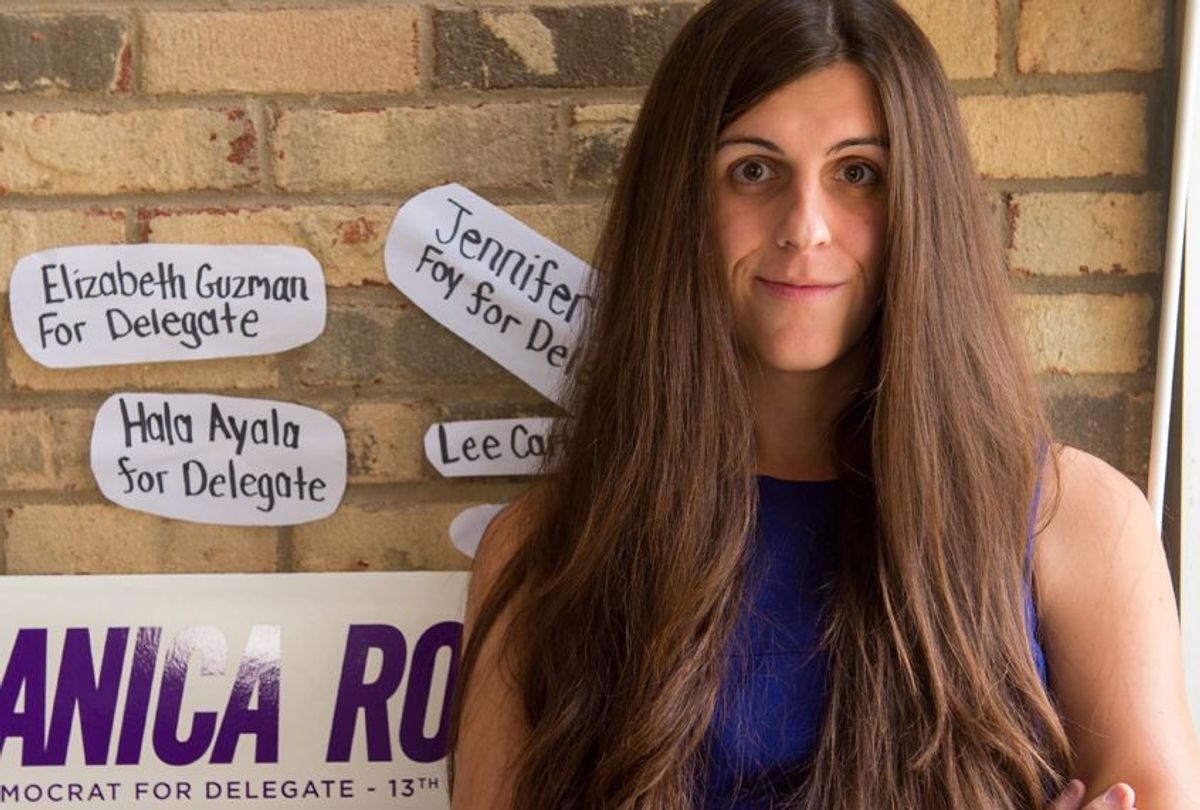The results of Tuesday’s elections held major steps forward for the transgender community.
Danica Roem became the first openly trans woman to serve in a state legislature, Andrea Jenkins the first black openly trans person to be elected to Minneapolis City Council and Tyler Titus the first trans man to be elected for the Erie School Board in Pennsylvania.
These victories were not won overnight, nor were they the first of their kind. Indeed, the history of transgender individuals either in or seeking elected office in the United States goes back to the beginnings of the modern LGBT movement in the late 1960s.
Yet, while transgender people have served in American governing bodies in the past, many held their gender identities secret in order to remain electable, remain private and even remain safe.
One such trans individual was Joanne Conte who served on Arvada, Colorado's city council from 1991 to 1995. While Conte described herself as a “raging activist,” she was not open about her trans identity or her past. In politics, however, the past is fair game.
In 1993, political opponents hired private investigators to dig into Conte's history. After she discovered she was set to be outed by a tabloid, Conte headed both her opponents and the paper off at the pass by coming out on her own.
Though she was rightfully angry over the invasion of her privacy, she ultimately came to terms with being open and out. “It’s as if I have a history and can face the world as a whole person after going through all those years of condemnation and embarrassment and complete degradation,” she said in 1993. "This is really a serendipitous blessing, not only for me, but for the masses of people suffering from this thing."
Alas, some in government and the press didn't fully embrace Conte afterwards. Various reports referred to her revelation as a “gender problem." The district attorney's office, for its part, sought libel charges against those who would have published the initial article exposing her gender identity, saying it was illegal to discredit someone due to personal “defect.”
While many of Conte's colleagues supported her, her career in politics was effectively over by 1994. Eventually, Conte would become radio host. When her station advertised her show with marketing asking “Is it a man? Is it a woman?” she split. She soldiered on as an investigative reporter and an activist until her death in 2013.
Another trans politician was Althea Garrison, a member of the Massachusetts House of Representatives from 1993 to 1995. Technically, she was the first black trans woman to hold office in the U.S. Like Conte, though, she was secretive and private about her actual gender identity.
In time, the press would also investigate Garrison’s past, with the Boston Globe asking her directly about her identity. She famously ended the conversation right then and there and continues to shut down any conversations about her past.
This year, Garrison ran for City Council at Large, and, on the same day when many other trans candidates won, lost. Still, 2017 seems a watershed year in the history of trans people in office.
Yet, even with all that, it's important to remember that many trans people still keep their identities secret to due to fears of job discrimination and physical danger. Indeed, 2017 is also already the deadliest year for trans people on record.
With that in mind, and an administration that seems determined to roll back protections for trans Americans, members of that community seeking and winning public office seems perhaps even more important and courageous than ever before.



Shares